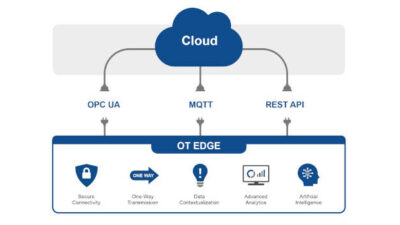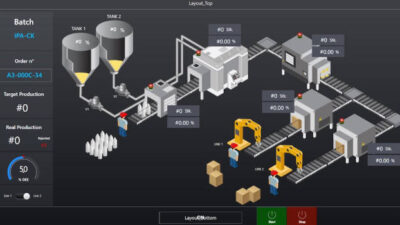While acknowledging it's not the first vendor to leverage the model, SAP claims its new Software-as-a-Service (SaaS) offering is ground-breaking nonetheless because it blends both front-office CRM and back-office ERP capabilities within the context of integrated business processes. “It's a complete solution,” said SAP CEO Henning Kagermann, at the launch event for SAP Business ByDes...
While acknowledging it’s not the first vendor to leverage the model, SAP claims its new Software-as-a-Service (SaaS) offering is ground-breaking nonetheless because it blends both front-office CRM and back-office ERP capabilities within the context of integrated business processes.
SAP had 1,000 developers working on its SaaS offering over a period of four years, at a total investment of between $300 million and $400 million euro.
“It’s a complete solution,” said SAP CEO Henning Kagermann, at the launch event for SAP Business ByDesign. “We have not designed it with traditional [application] categories in mind. From the beginning, the idea was to design it for end-to-end, flexible, adaptable, business processes within a company and beyond the boundaries of a company.”
The new offering targets companies with 100 to 500 employees. SAP claims 20 customers already are live on the solution, and its goal is to have 10,000 companies on the platform by 2010.
During a recent demonstration of the software, SAP executives revealed how users would access configurable roles-based screens that handle tasks such as quotation management. The screens depict how traditional back-office information—such as real-time inventory levels needed for order promising—are immediately visible within such customer-facing processes.
Kevin Flanagan, CEO of Compass Pharma Services , a Clifton, N.J.-based contract manufacturing and packaging services provider to the pharmaceuticals industry, says this front-to-back business process integration was a key reason Compass chose to become one of the early customers for Business ByDesign, though it also helped that SAP systems are widely used in the pharmaceutical industry.
“We had a lot of familiarity with SAP due to the fact that all our purchase orders and work orders are received from SAP environments,” says Flanagan. “This [industry acceptance of SAP] weighed in our decision, but the most critical factor for us was the fact that we now had an integrated solution.”
SAP estimates there are about 1.2 million midmarket companies worldwide that need a comprehensive business suite, but have been reluctant to purchase a solution due to high cost of ownership under traditional application delivery models. By gaining at least 10,000 of these companies as customers for Business ByDesign by 2010, SAP is betting the new solution will help SAP reach its goal of 100,000 total customers by that same year.
SAP will continue to sell two other solution sets into the small and medium business (SMB) market. Its SAP Business One targets companies with fewer than 100 employees, while its SAP Business All-In-One solution targets companies with 100 to 2,500 employees. Kagermann says All-in-One, based on SAP’s main ERP suite, appeals to larger midmarket companies that need “micro-vertical” industry functionality built into various industry versions of the product (see table) .
SAP Executive Board Member Peter Zenke says SAP had 1,000 developers working on the SaaS offering over a period of four years, at a total investment of between $300 million and $400 million euro. Much of the focus involved coming up with an intuitive, easy-to-configure user interface, but developers also were tasked with blending SAP’s enterprise service-oriented architecture with SaaS.
Other vendors already are established in the SaaS market—perhaps most notably, Salesforce.com , which has 35,500 customers of its CRM solution, while NetSuite , Glovia Services , and Plexus Systems offer enterprise-level SaaS solutions.
“We welcome SAP to the SaaS party, so to speak,” says Craig Sullivan, a VP with NetSuite, “but we think they are going to find some significant challenges with companies in this market segment that are concerned about solution costs.”
At the same time, adds Sullivan, NetSuite believes SAP’s move validates the concept of a comprehensive SaaS-delivered suite for SMBs.
Business ByDesign, which is not yet generally available worldwide, can be purchased by selected early customers in the U.S. and Germany, with opportunity for early customers in China, France, and the U.K.
While SAP is quick to point out the considerable resources and goals involved in what Kagermann called a “new era” for SAP, some observers—including Paul Hamerman, a VP with Cambridge, Mass.-based Forrester Research —say the market impact will take time to unfold.
“The product launch announcement is only a first step in a lengthy ramp-up process. Much work remains,” concludes Hamerman.
Given the addition of Business ByDesign, its new on-demand offering, SAP now has three solution sets aimed at various size strata and user needs in the small to midsize business market.



